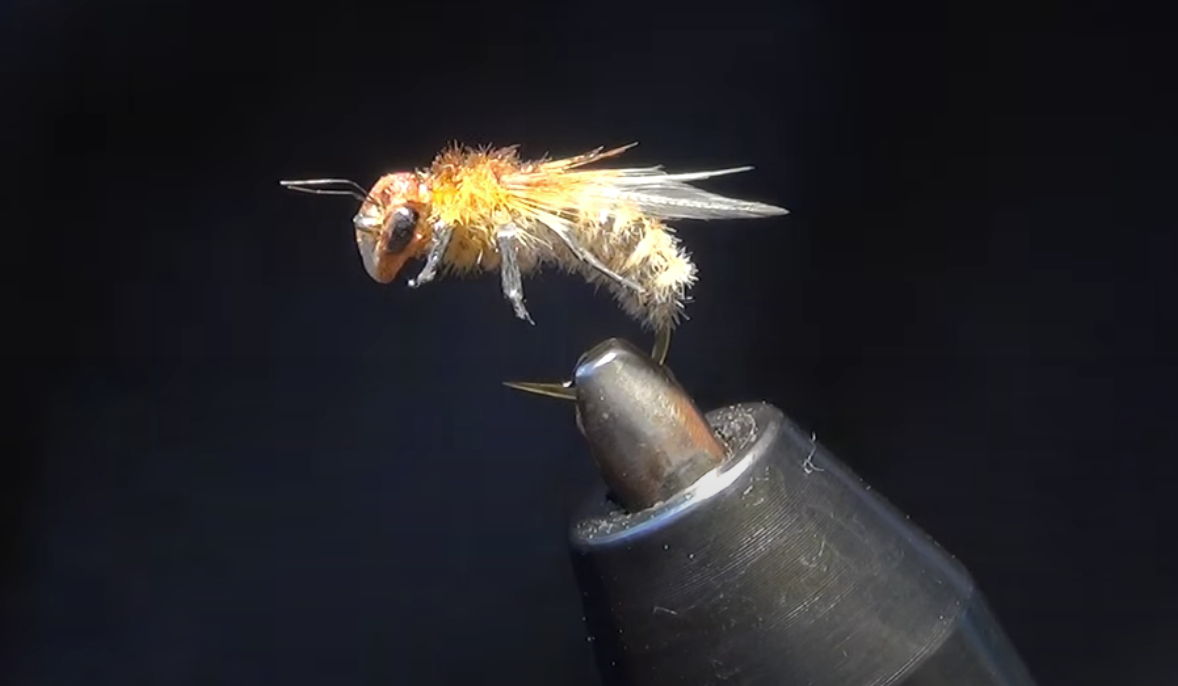
Bumble bee photo credit Envato.
I have to apologize right off the bat
The video below may be confusing to a beginner and even an intermediate skill level because of very poor framing by the great tyer Dimitri Tseliaritski, and his being a Russian speaker does not lessen the strain. However, the video itself is high quality and the simple and fast tying techniques are worth incorporating.
I looked for other ‘bee’ ties and none I found matched the finished quality of Mr. Tseliaritski’s. — Angie Roth
The materials used [mostly] are identifiable and make quick work of a good assembly, and the technique used broadens that gap between other videos I was able to find. I hope you find unraveling Tseliaritski bumblebee as enjoyable as I did.
Here’s Tseliaritski’s recipe of materials as translated by a Russian speaker:
1. TMC 2488
2. Brown foam (2mm)
3. Microchenille (some Italian kind)
4. Thin skin/film
5. Grey grizzly hackle for wings
6. Lacquer
7. Any kind of hair for the antennae, he recommends either bear hair or hair from a jacket collar
8. Legs: bristles from a broom (household sweeping broom)
I also tried tying the bee on a ‘tube,’ but the outcome was not what I expected. Some were, as tying progressed, serviceable
There are other bee and wasp patterns worth noting, but too many to list or link. A simple Google via YouTube should deliver more assemblies worth note. Some of the good looking bee/wasp patterns take too long to make, in my opinion.
[https://youtu.be/Wbq5TSGmwr8], [https://www.youtube.com/watch?v=uuhb3za0d7c], [https://youtu.be/FzNkHF-xddc]


